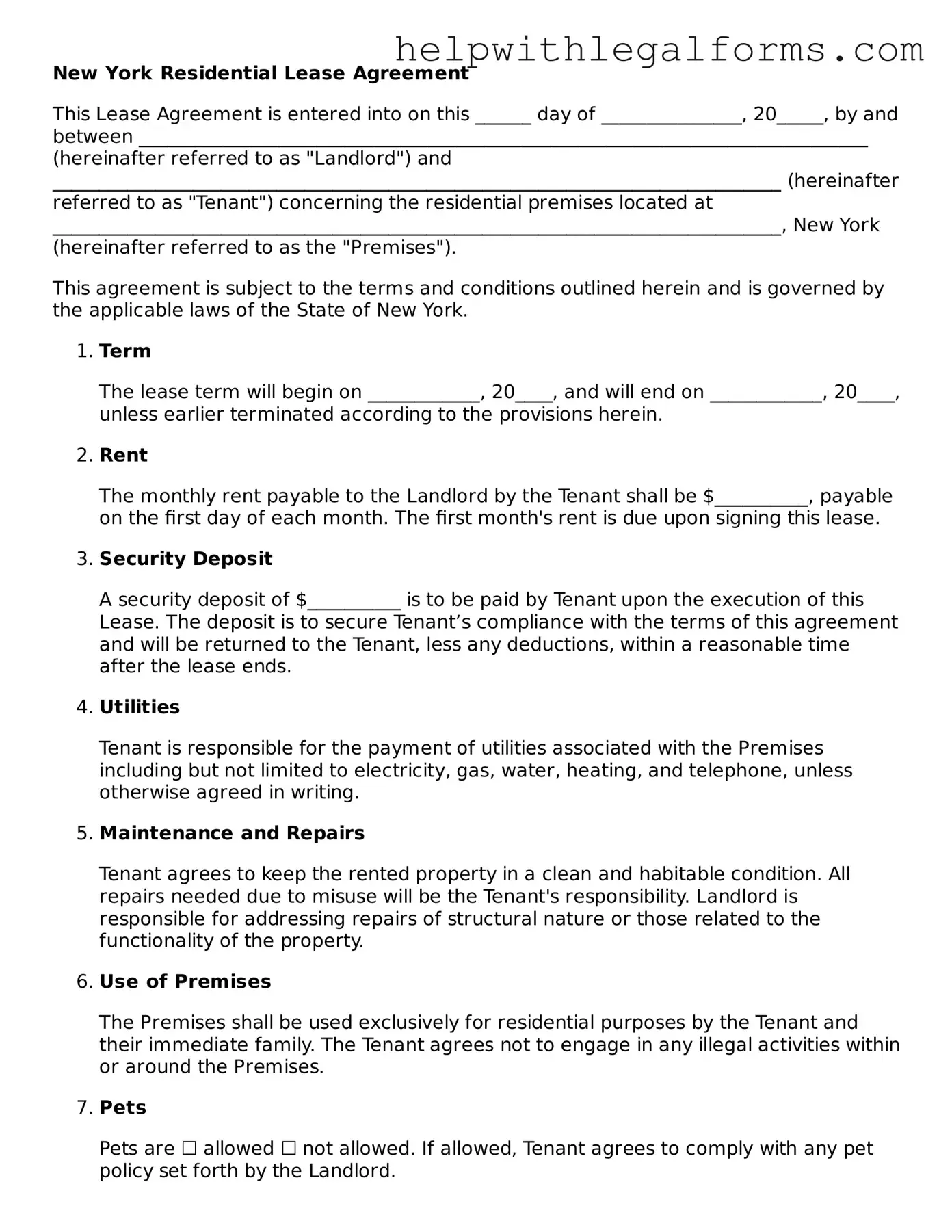What is a New York Residential Lease Agreement?
A New York Residential Lease Agreement is a legally binding document between a landlord and tenant that outlines the terms and conditions of renting residential property in New York. This agreement specifies details such as the duration of the lease, monthly rent amount, security deposit requirements, and the rights and responsibilities of both parties involved.
How long does a standard New York Residential Lease Agreement last?
Typically, a standard New York Residential Lease Agreement lasts for one year. However, the lease term can be shorter or longer, depending on what both the landlord and tenant agree upon. It's important for both parties to carefully review and agree on the lease duration before signing the agreement.
Are landlords required to provide a notice before entering the rented property in New York?
Yes, in New York, landlords must provide tenants with reasonable notice before entering the rented property. The commonly accepted practice is to give at least 24 hours' notice. This requirement is for respecting the tenant's privacy and is only waived in emergency situations or when repairs are urgently needed.
What happens if a tenant wants to terminate the lease early?
If a tenant wants to terminate their lease early, they should first review their lease agreement for any clauses that allow for early termination under specific conditions, such as military service or job relocation. If there's no such clause, the tenant may negotiate an early termination with the landlord. However, without a mutual agreement, the tenant may be responsible for rent until the end of the lease term or until the unit is re-rented.
Are security deposits required and regulated in New York?
Yes, security deposits are both required and regulated in New York. Landlords can ask for up to one month's rent as a security deposit. New York law also requires that the deposit be returned to the tenant within 14 days after they move out, provided the tenant leaves the rental in good condition and there are no damages beyond normal wear and tear. Landlords must provide an itemized statement for any deductions made from the security deposit.
